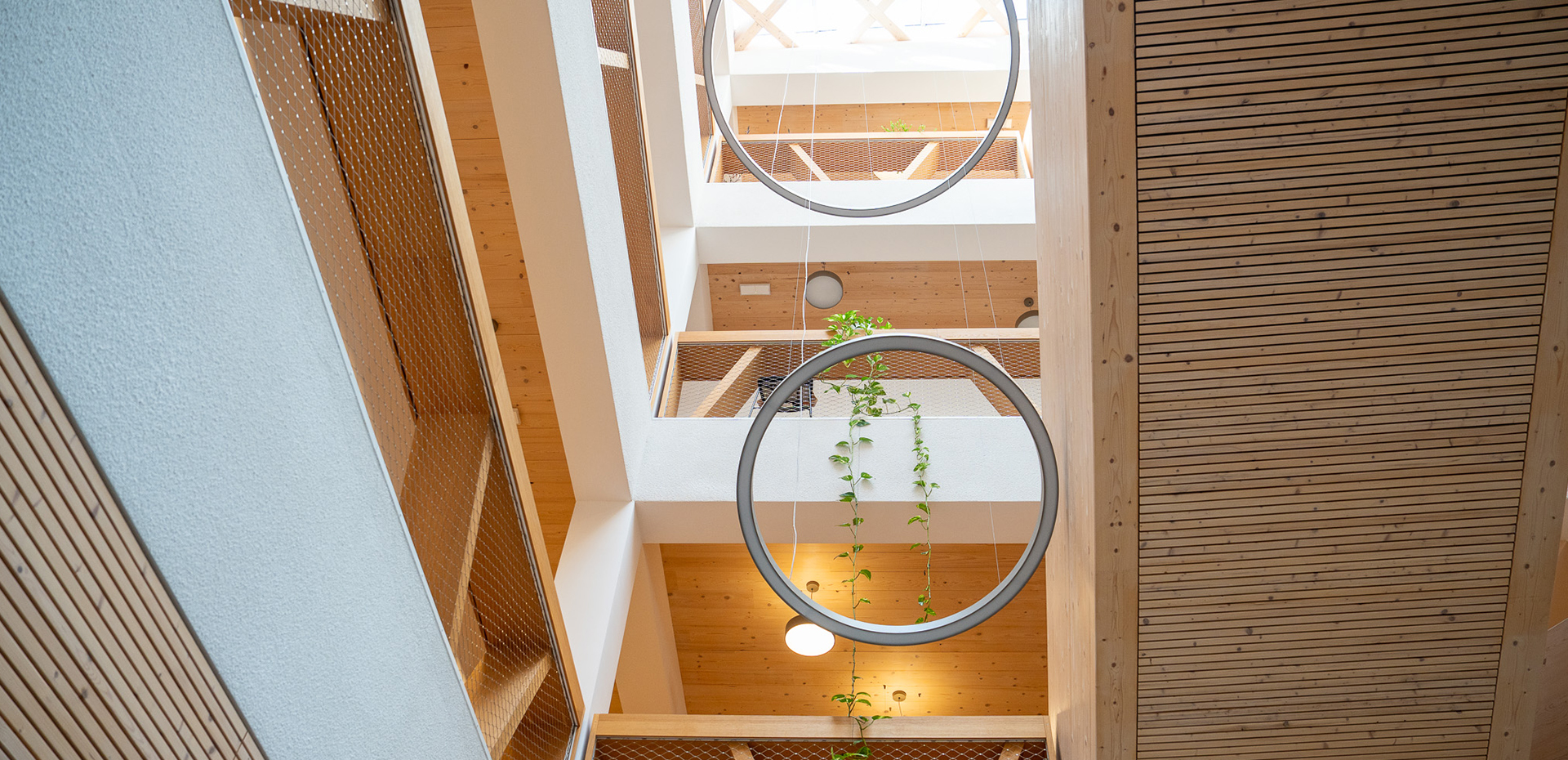Take a peek into our little windows …
Did you know? When you walk through the doors of our company, you’ll notice a row of colorful little windows in the hallway. Each one holds an object with its own story.
This time, we’re presenting a very special object that found its place in one of them:
a wooden sound amplifier for mobile phones, developed by four young creators: Tobija Štalec, Jan Bernik, Matic Demšar, and Ažbe Jereb, students of the Secondary School of Woodworking – ŠCŠL. As part of the Moje podjetje (My Company) project, they founded a student company named Sound&Round.
Their goal? To increase the volume of music playback without using electricity – sustainable, aesthetic, and practical.
How does the wooden amplifier work?
You simply insert your mobile phone into the top slot. The amplifier passively – without batteries or cables – enhances the phone’s sound. Always ready to use, anytime and anywhere.
Where do we come in?
The students reached out to us seeking expert support in improving the product. They were mainly interested in how the amplifier’s design could be upgraded to produce a fuller sound, more suitable for listening to music. We were happy to help and carried out a series of measurements to evaluate:
- how much the volume increases and
- the quality of sound transmission.
Results?
- Using the wooden amplifier increases the volume by 7 dB – which means the sound is approximately twice as loud.
- The sound is most amplified between 1 and 3 kHz, which improves speech intelligibility, making the product especially suitable for listening to podcasts.
What affects sound quality?
- Sound is influenced by the internal shape – the so-called “throat”. By adjusting the throat’s length and experimenting with wider or narrower forms, the developers can likely enhance the audio experience even further.
- The material also plays an important role: high-quality speakers are usually made from wood, while plastic ones often fall short. The students were curious about whether the type of wood (elm, pear, maple, walnut) affected the sound. The differences turned out to be minimal or almost negligible.
We were happy to share some key pointers to support their further development. The idea has great potential, and we’re confident that, with the enthusiasm and willingness to learn they showed during their visit, they’ll develop something truly excellent. We’re excited to see where the journey takes them.


